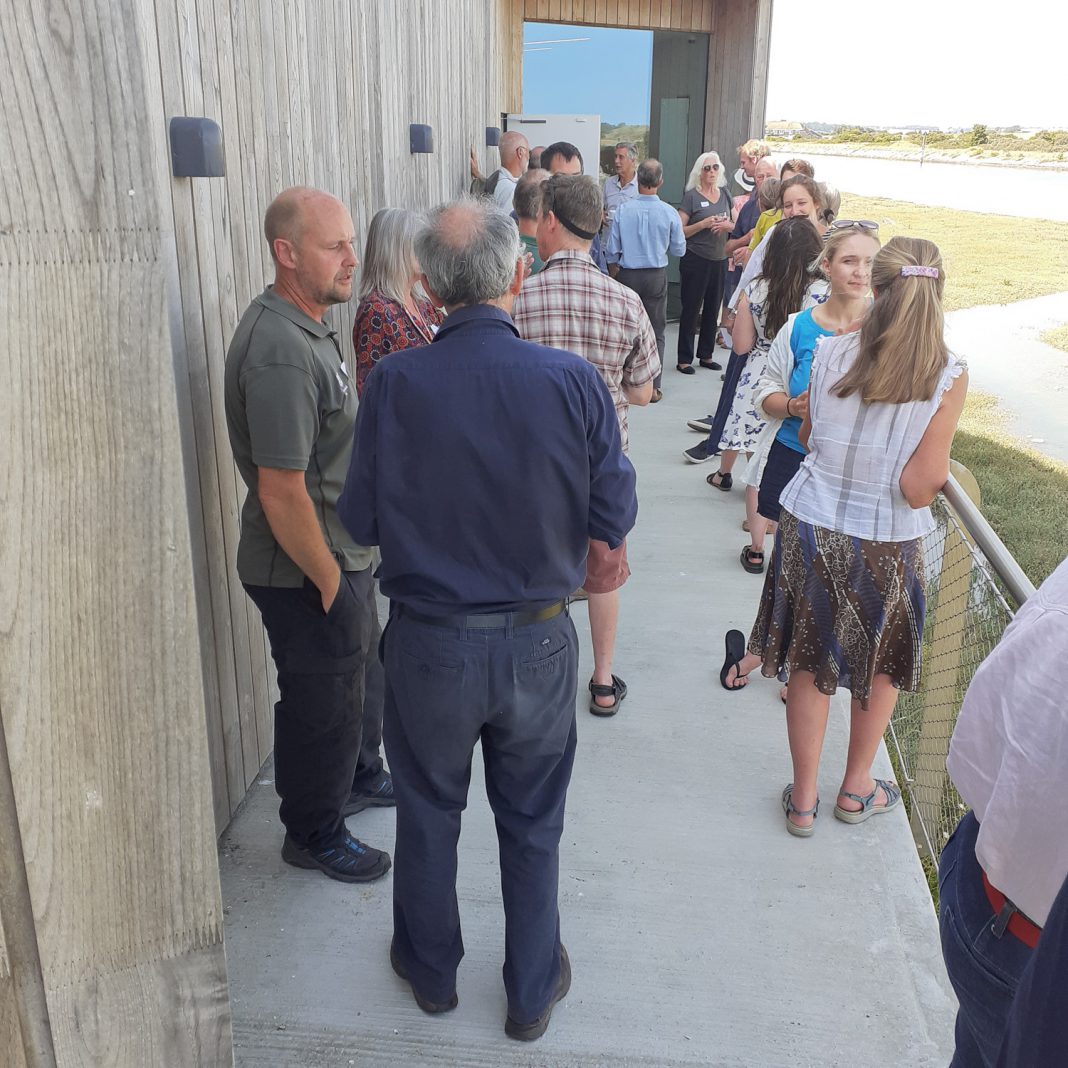On Monday last week, farmers, landowners and other stakeholders attended a networking event at the Discovery Centre in Rye Harbour. Initiated by Sussex Wildlife Trust, this event aimed at encouraging more active collaboration for nature in the Rye to Hastings geography.
Most of this land is in private ownership and farmed. Some large areas are owned by the National Trust, Woodland Trust, Environment Agency and local authorities, including the land at Rye Harbour Nature Reserve managed by Sussex Wildlife Trust. In addition, there are at least three independent land management trusts: Pett Level Preservation Trust, The Wetland Trust, and the Maxfield Nature Conservation Trust.
Climate change, growing environmental concerns and an uncertain economic climate means that agriculture is likely to be facing a series of profound challenges that will have a ripple effect on this special landscape. Attendees were invited to put forward ideas which could address these issues.
Of particular interest was a presentation given by Georgina Wallis, an agricultural consultant at Sussex-based land consultants CLM.
Facilitating stewardship
Farmers and landowners can now access support, training and advice through a new government scheme. The Countryside Stewardship Facilitation Fund helps groups of farmers and landowners work together to deliver environmental benefits for their local area. By coordinating actions and sharing knowledge, they can achieve greater benefits than they perhaps would by working alone.
One such ‘farmer cluster’ group is 1066 Farmers, which currently has 33 members managing 8,000 hectares (almost 2,000 times the size of Wembley Stadium!) of land across the High Weald and River Rother catchment. It will focus on a host of topics, including soil health, meadow restoration and water quality. Officially launched in July 2022, membership is free to those farming in the area.
Georgina said that: “Nature knows no boundaries, so the Countryside Stewardship Facilitation Fund scheme offers an opportunity to support farmers at a ‘landscape-scale’ to optimise benefit to the environment. We are going through a period of significant change within UK agriculture and now more than ever it is vital that we support our local farmers in decision-making around agri-environment topics.
“An initial survey of members shows a strong desire to undertake on-farm surveys of habitat and species, receive guidance on boosting soil health and resilience, and restore pond habitats, to name a few.”
For more information about 1066 Farmers, please contact Georgina Wallis on 07879 123996 or email georgina@c-l-m.co.uk.
Weald to Waves
It remains to be seen what other projects might emerge from this interesting event.
Further to the west, there is an exciting new project called Weald to Waves, which seeks to create a thriving wildlife corridor 50 miles in length, from the Ashdown Forest to the Climping Gap near Littlehampton.
Buffered by regenerative and wildlife friendly food production, it aims to create 10,000 hectares of contiguous space for wildlife, with rich, biodiverse habitats along the route, connecting them as much as possible so that animals can travel through the landscape easily.
It also seeks to engage people and communities in nature recovery through the Sussex Regeneration Collective – a Sussex-wide map of all the nature projects across the county from garden to landscape level. See: https://www.wealdtowaves.co.uk/
Image Credits: Barry Yates .




This looks like an interesting initiative, however I note that there were no groups representing public access such as Sustrans, Sussex Greenways, the Ramblers, equestrian interests or disabled groups.
By solely focussing on ‘nature recovery’ they’re missing a big part of the puzzle. Whilst there are obviously issues with increased public access these are manageable: viz, the work of Jake Fiennes at the Holkham Estate Nature Reserve where they’ve shown that fragile bird habitats can comfortably co-exist with more visitors. We need more access to nature for exercise, enjoyment, and the physical and mental health of our communities. Don’t forget this our land too! It’s not just about the birds.